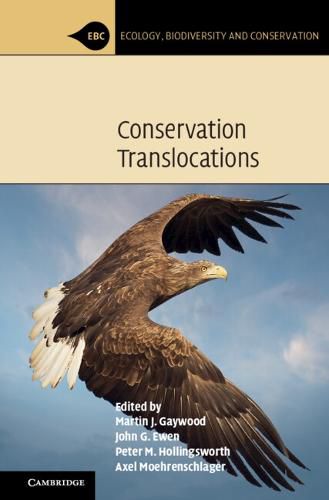Readings Newsletter
Become a Readings Member to make your shopping experience even easier.
Sign in or sign up for free!
You’re not far away from qualifying for FREE standard shipping within Australia
You’ve qualified for FREE standard shipping within Australia
The cart is loading…






Conservation translocation - the movement of species for conservation benefit - includes reintroducing species into the wild, reinforcing dwindling populations, helping species shift ranges in the face of environmental change, and moving species to enhance ecosystem function. Conservation translocation can lead to clear conservation benefits and can excite and engage a broad spectrum of people. However, these projects are often complex and involve careful consideration and planning of biological and socio-economic issues. This volume draws on the latest research and experience of specialists from around the world to help provide guidance on best practice and to promote thinking over how conservation translocations can continue to be developed. The key concepts cover project planning, biological and social factors influencing the efficacy of translocations, and how to deal with complex decision-making. This book aims to inspire, inform and help practitioners maximise their chances of success, and minimise the risks of failure.
$9.00 standard shipping within Australia
FREE standard shipping within Australia for orders over $100.00
Express & International shipping calculated at checkout
Conservation translocation - the movement of species for conservation benefit - includes reintroducing species into the wild, reinforcing dwindling populations, helping species shift ranges in the face of environmental change, and moving species to enhance ecosystem function. Conservation translocation can lead to clear conservation benefits and can excite and engage a broad spectrum of people. However, these projects are often complex and involve careful consideration and planning of biological and socio-economic issues. This volume draws on the latest research and experience of specialists from around the world to help provide guidance on best practice and to promote thinking over how conservation translocations can continue to be developed. The key concepts cover project planning, biological and social factors influencing the efficacy of translocations, and how to deal with complex decision-making. This book aims to inspire, inform and help practitioners maximise their chances of success, and minimise the risks of failure.